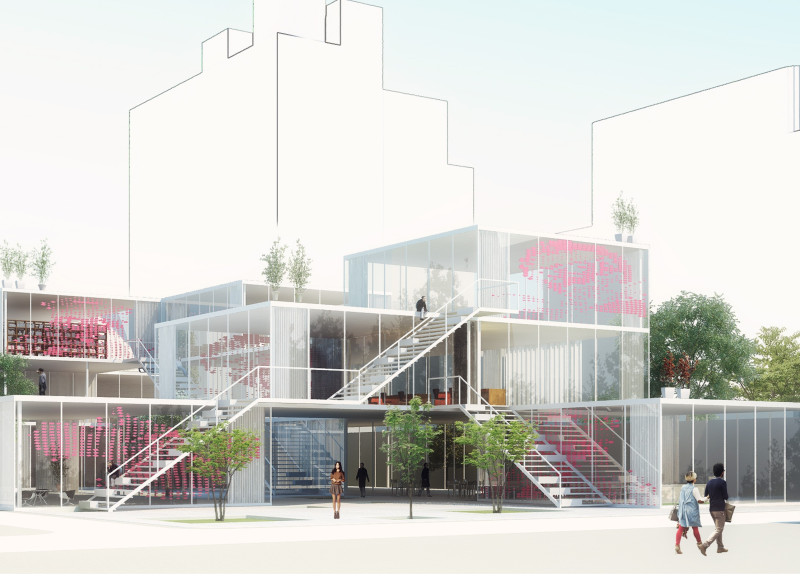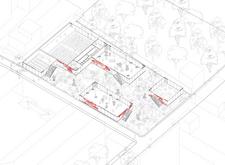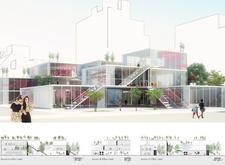5 key facts about this project
### Overview
Located in central Tokyo, the Tokyo International Popular Culture Laboratory is an architectural intervention designed to facilitate social interaction and community engagement among students. The intent is to create a conducive atmosphere for educational pursuits while promoting accessibility and connectivity with the urban surroundings. The building's design reflects a thoughtful consideration of how architectural spaces can foster relationships among individuals within a vibrant cultural context.
### Spatial Connectivity
The layout emphasizes a circulation route that integrates the building with the bustling streets, enhancing pedestrian movement and engagement. By positioning the building to connect two busy thoroughfares, it invites public interaction, encouraging an immersive experience with pop culture exhibitions. The open interior promotes visibility and accessibility, allowing for intuitive navigation and varied engagement opportunities for both students and the public.
### Material Selection
The use of materials within the laboratory is intentional and varied. The predominant glass façade enhances natural light entry, establishing a visual dialogue between the interior and exterior environments. Concrete offers structural integrity while providing a stark contrast to the transparency of glass, symbolizing the steadfast nature of education amidst the dynamic cultural landscape. Wooden elements, featured in seating areas, add warmth, while subtle metal accents contribute to contemporary sophistication. The integration of greenery throughout the design not only enhances aesthetic appeal but also reinforces commitments to sustainability and environmental consciousness. These materials collectively support the laboratory's mission of promoting a vibrant and interactive educational experience.





















































